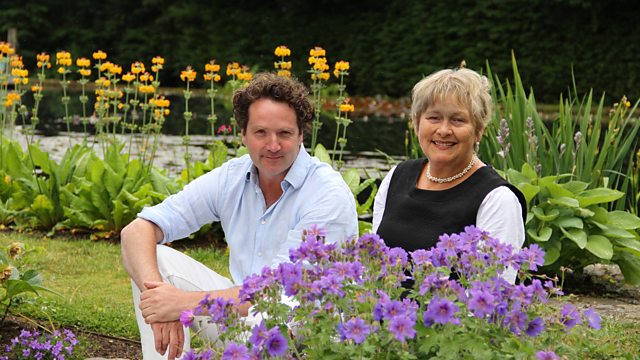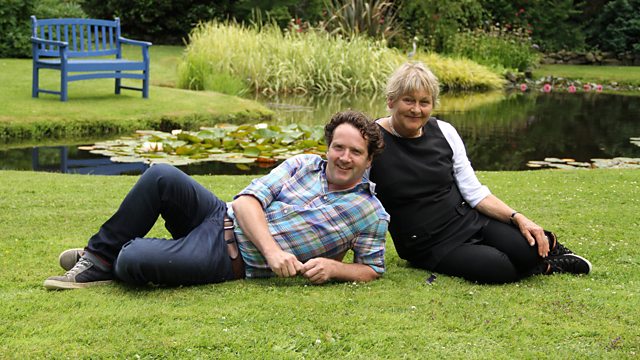A Garden in Snowdonia episode 4: Ann Smith, the visitor services manager, implements an ambitious programme of summer events to attract more visitors. Troy Scott Smith is concerned that his beautiful grounds could be ruined by crowds. A year in the life of Bodnant Garden in north Wales.
Bodnant Garden is a National Trust property near Tal-y-Cafn, Conwy, Wales, overlooking the Conwy Valley towards the Carneddau mountains. Founded in 1874 and developed by five generations of one family, it was given to the National Trust in 1949. The garden spans 80 acres of hillside and includes formal Italianate terraces, informal shrub borders stocked with plants from around the world, The Dell, a gorge garden, areas of woodland garden with a number of notable trees and a waterfall. Since 2012, new areas have opened including the Winter garden, Old Park Meadow, Yew Dell and The Far End, a riverside garden. Furnace Wood and Meadow opened in 2017. There are plans to open more new areas, including Heather Hill and Cae Poeth Meadow.
A Garden in Snowdonia episode 4
The garden’s founder, Henry Davis Pochin, was a Leicestershire-born Victorian industrial chemist who acquired fame and fortune inventing a process for clarifying rosin used in soap, turning it from the traditional brown to white. He became a successful businessman, mayor and JP. Pochin bought the Bodnant estate in 1874 and employed Edward Milner, apprentice to Joseph Paxton, to redesign the land around the existing Georgian mansion house, then just lawns and pasture. Together Pochin and Milner relandscaped the hillside and valley, planting American and Asian conifers on the banks of the River Hiraethlyn to create a Pinetum, and reinforcing stream banks to create a woodland and water garden in the valley, in the style of the garden designer of the day William Robinson in his book The Wild Garden. In the upper garden, Pochin and Milner created the Laburnum Arch and glasshouses, to house exotics.
The development of the garden was continued by Henry and Agnes Pochin’s daughter Laura McLaren, Baroness Aberconway, who married Charles McLaren, 1st Baron Aberconway. Laura, like her mother, was a campaigner for women’s suffrage and founded the Liberal Women’s Suffrage Union. She was also a passionate gardener and inspired her son Henry McLaren, 2nd Baron Aberconway, to whom she entrusted the care of the garden in 1901. Together they created the Skating Pond at the Far End and began work on the Italianate Terraces. Henry McLaren oversaw the major developments of the garden. He sponsored plant hunting expeditions of the day by explorers such as Ernest Wilson, George Forrest and Frank Kingdon-Ward who brought back plants from China and the Himalayas including magnolias, camellias and rhododendrons. He also invested in a plant breeding programme producing Bodnant hybrid rhododendrons.




